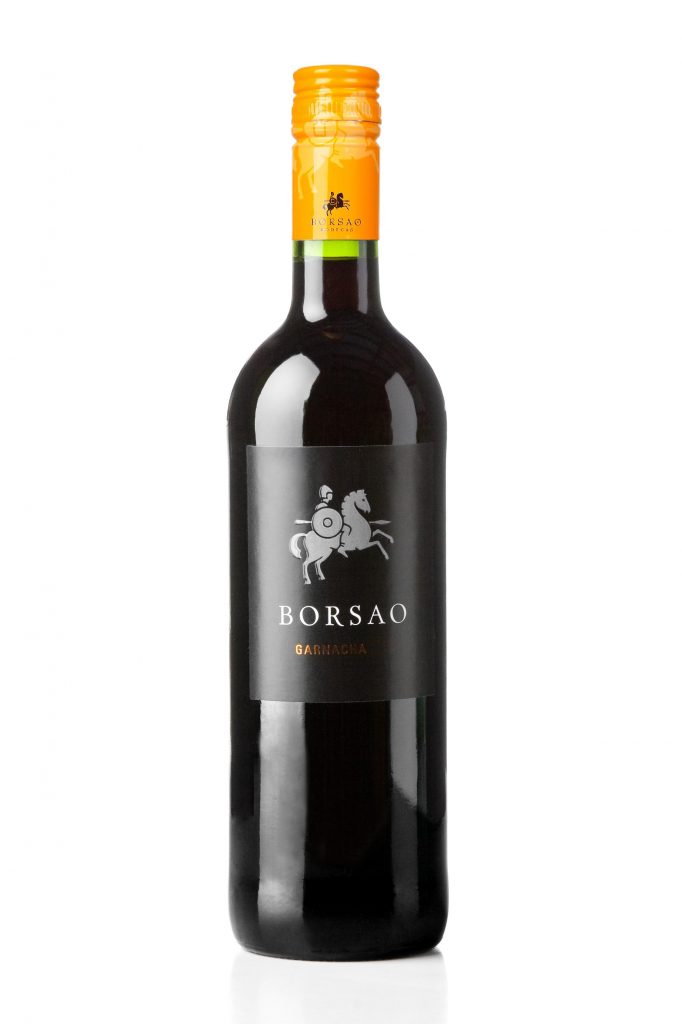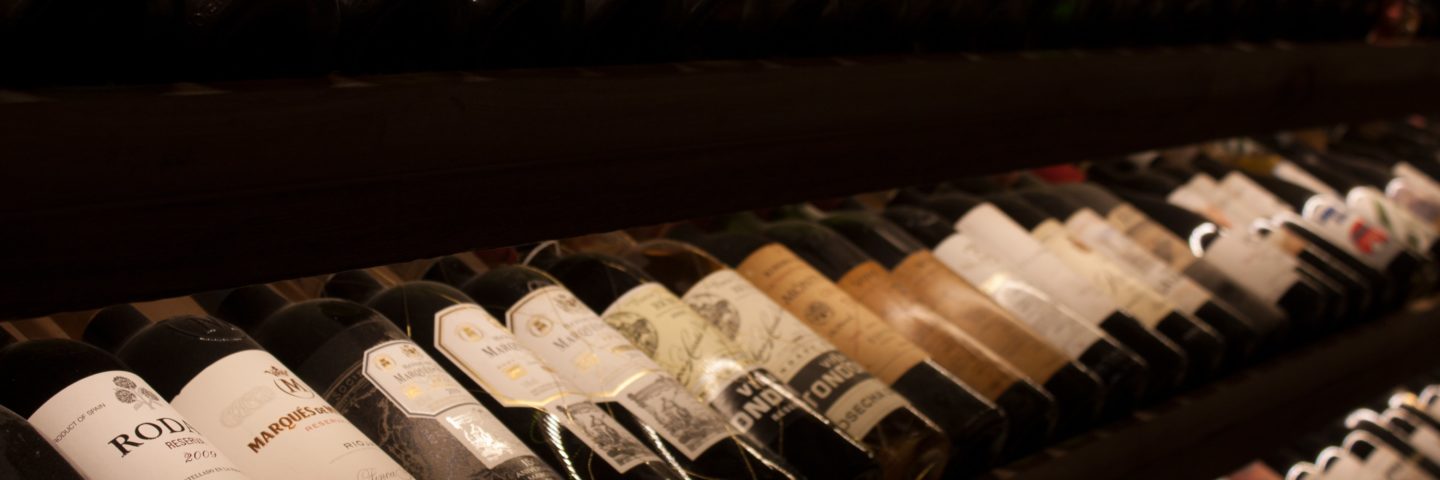by Master of Wine, Nick Adams.
This blog has nothing to do with the physical construction of the said item, but how anyone can put together a collection of wine and enjoy the benefits from this exercise. And it gives me the chance to outline a new development with WineTrust and the web site offering which may be of interest.

The traditional imagery of a “cellar” for many is probably one of deep brick bins, with cobwebbed lattice racks in a large stately home overseen by a butler. But the term for me, and for most of the rest of the population is about having a nice collection of wines, ready to hand to pick from subject to the occasion, meal or frankly impulse.
I would encourage anyone who enjoys wine on a regular basis to look seriously at putting together (over time) a collection, which is clearly within your budget, and which can be stored comfortably at home (but not in the loft!). But before outlining an approach can I deal with an often cited issue for people when thinking about this idea.
I have heard it said that to paraphrase, “If I buy more, I’ll just drink it”. Whilst I can understand this concern, I believe that as you build up a collection you do not in fact drink any more, or quicker, than you normally would when buying wine on an individual basis. Yes, that first case might well “wink” at you, but part of the fun is having a mix of wines where the anticipation of the occasion is as enticing as the wine itself. So how might you approach building a cellar.

Firstly of course is look at your budget – by that what do you normally spend over a year on wine and what if you were to condense that expenditure down into 3 or 4 “bursts” over the same period, what does that give or allow you to spend in larger chunks?
Secondly storage area – fantastic if you do have or can build a cellar but this really is the exception. Much better to look at investing in a fridge cabinet or building a discrete area (such as under the stairs). Even a dedicated cupboard can be made to work if it doesn’t have big fluctuations in temperature.
Thirdly quite clearly which wines do you like to drink, and those on a regular basis versus those which you might consider spending more on for a special occasion, dinner party or landmark. The fun of your cellar is you can budget to cater for both – yes, there is an initial cash flow drain but this evens out over the year – and you can possibly make savings by buying “in bulk” – so to speak – and pick up discounts or offers along the way. I appreciate that not everyone drinks wine every day, but you can think and plan along these lines whatever your regime is.

For your better quality wines, it is worth looking at investing in a wine fridge – big ones can be expensive but there are plenty of more compact examples to match any budget (please see pictures) – and they can be discrete, even attractive, pieces of furniture. And yes, if you have space under the stairs this relatively dead area can be converted into a highly practical storage area too (again please see picture)
Speaking practically, as an example, about my own cellar I would say I have it in three distinct tiers:
Tier One – these are everyday wines which we enjoy on a weekly basis – white, reds and rosés which you would happily crack open with your pasta supper/fish and chips for want of an expression. These I keep in the garage either in their original case or in wine racks against the wall.
Tier Two – these I loosely refer to as “weekend” or “dinner party” wines. This doesn’t mean they get automatically opened every weekend, but they fit that sort of criteria you might describe as “I feel like a little treat”, or you’re making more of an effort with a meal/special ingredient, or friends are coming around and you want to make it a bit more special. These wines I do keep in the wine fridge as they could be kept easily for up to a year before being opened.
Tier Three – these are much finer wines kept specifically for very special occasions, and/or because right now they are not ready and need keeping longer to mature and show their best. These are kept in the wine fridge for sure and usually at the back well out of sight, so they don’t wink at me! The other issue with some of these is that they may not be available in the future when you then might want to buy them, or if they are the price has increased significantly in the meantime.
What I like is this gives you the freedom to have a much broader selection to choose from to meet any occasion or mood where you suddenly think, “I suddenly fancy that …”, or “I’m cooking this what might go best with it…”. And with your special bottles the sense of anticipation for that occasion when you will crack them open is part of the fun of collecting.
When buying from Wine Trust most people are purchasing at least 12 bottles so you can look at mixing and matching here to start building up your tiers, eg 6-8 bottes x Tier 1, 2-4 x Tier and 1-2 x Tier 3. For finer wines I sometimes link up with other people and spend a lot more on a 6 pack of something special, but then split it up amongst three of us say (ie 2 bottle each). The advantage of buying the 6 pack is that Wine trust has started to list many more examples of finer wines in these case sizes. And if you can indulge in a special 6 pack just for yourself the case itself becomes a handy storage facility. And the good news is …
The Wine Trust site is about to be significantly refreshed and relaunched and greater emphasis will be put on these 6 packs sealed case offerings – and with a discount pro rate versus buying just by the bottle – please watch this space as they say.
I hope this helps if you are thinking about putting more focus or structure into your wine purchases. I will finish if I may with three personal Tier choices which I have made from the list as examples.
Tier One – Borsao Campo de Borja – a long term favourite at WineTrust and a lovely robust, juicy, and fruity Spanish red to go with many midweek meals.

Borgia by Borsao Garnacha
Searching high and low for exceptional value, WineTrust struck gold with Boriga by Borsao. Bright plum and berry fruit aromas. The palate is rich and welcoming with ripe bramble characters and soft, approachable tannins on the finish.
Tier Two – Touraine Sauvignon Blanc Domaine des Echardières – an elegant, crisp dry citric white wine from the Loire, which works well with classic weekend (flat and shell) fish dishes for example.

Domaine des Echardières Sauvignon Blanc, Touraine
Spot on Loire Valley Sauvignon Blanc, which could easily pass off as being from a more revered appellation. Bold flinty nose and bright gooseberry and citric fruit palate; really zesty, refreshing and satisfying. Finishes with a pleasant chalky, leafy note.
Tier Three – Fontodi Chianti Classico – a superb example of this great Tuscan wine, remarkable levels of concentration, power, and balance – yes, you can drink now but I also buy to put some bottles away to age for another 3-5 years.

Fontodi Chianti Classico
The wine is deep ruby red in colour. On the nose, it has aromas of sour cherry and plums leading to notes of leather and tobacco. On the palate, it has great depth of flavour, with juicy fruit and supple tannins, giving way to a silky-smooth texture. It has a great structure and finishes with a fine mineral note.

